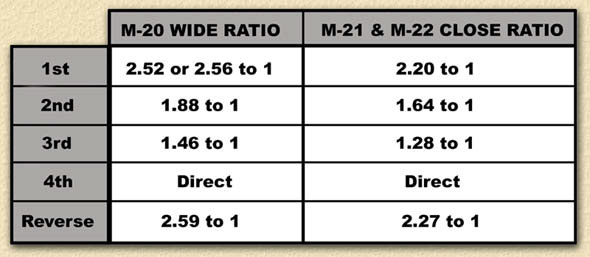M-22 “Rock Crusher” Identification
The M-22 close-ratio transmission is easily identified internally from the M-20 and M-21 versions by the angle of the gear teeth.
The M-22 was only produced in a close-ratio version, so it will not appear on models with high rear-axle ratios (3.55 or lower numerically) unless someone has changed it.
The main internal differences in the 3 types of transmissions are listed in the parts below.
• M-20 differs from M-21: Input shaft and Cluster gear
• M-20 & M-21 differ from M-22: Input shaft, Cluster gear, First, Second, Third, Reverse idler gear
All other components interchange, with the exception of production upgrades and changes. For example, 1963-65 synchronizers, blocking rings, etc. do not interchange with 1966 and newer versions, and therefore the transmission must be stock or interchanged as a unit.



